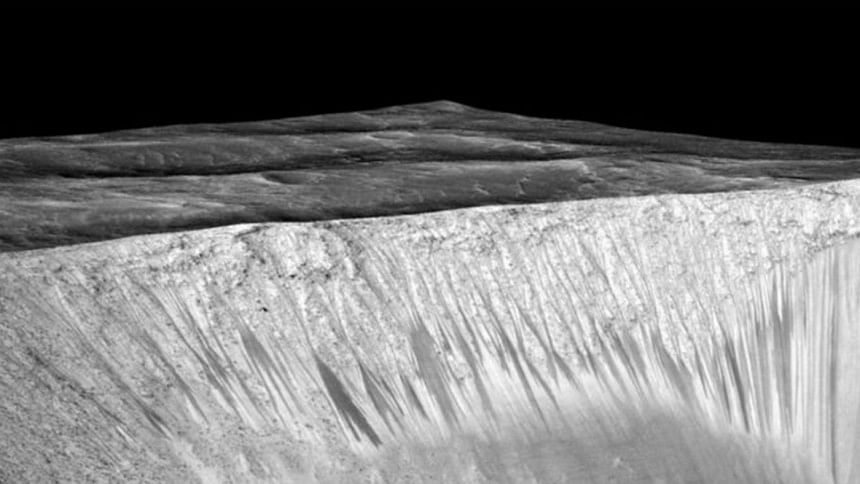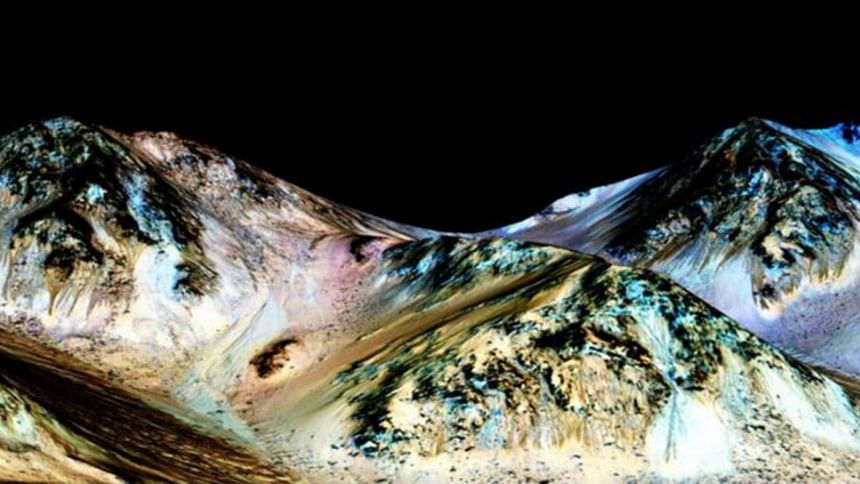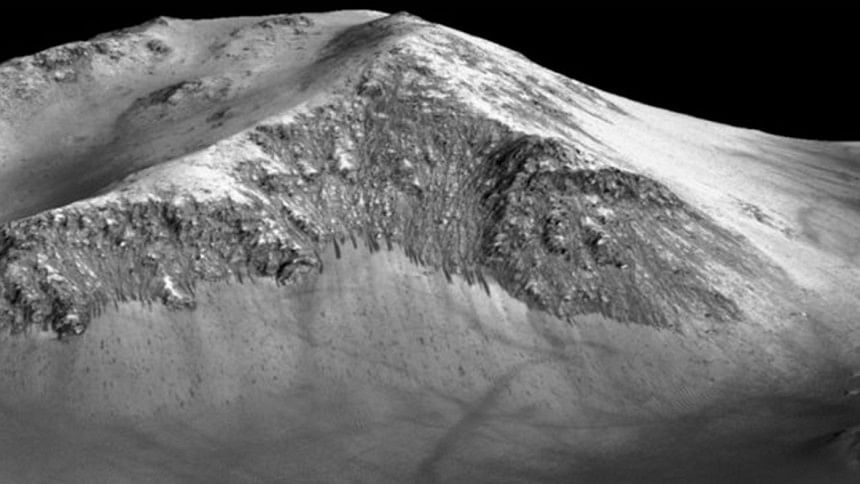Martian streaks 'painted by water'

Scientists think they can now tie dark streaks seen on the surface of Mars to periodic flows of liquid water.
Data from a Nasa satellite shows the features, which appear on slopes, to be associated with salt deposits.
Crucially, such salts could alter the freezing and vaporisation points of water in Mars's sparse air, keeping it in a fluid state long enough to move.
Lujendra Ojha and colleagues report the findings in the journal Nature Geoscience.
There are implications for the existence of life on the planet today, because any liquid water raises the possibility that microbes could also be present. And for future astronauts on Mars, the identification of water supplies near the surface would make it easier for them to "live off the land".
Researchers have long wondered whether liquid water might occasionally flow across the surface today.
Secret source
It is not a simple proposition, because the temperatures are usually well below zero Celsius and the atmospheric pressure is so low that any liquid H20 will rapidly boil.

But the observation over the past 15 years of gullies and surface streaks that appear to change with the seasons has heightened the speculation.
Ojha has now presented new data from the US space agency's Mars Reconnaissance Orbiter that seems to solve the conundrum.
MRO has an instrument called Crism that can determine the chemistry of surface materials.
It has looked at four locations where dark streaks are seen to come and go during Martian summer months.
Crism finds these "recurring slope lineae" (RSL) to be covered with salts.
They are salts - magnesium perchlorate, chlorate and chloride - that can drop the freezing point of water by 80 degrees and its vaporisation rate by a factor of 10.
Quite where the water is coming from to make the streaks is still unclear, however. The locations studied by MRO are equatorial, and any stored water in this region of Mars, perhaps in the form of ice, is thought to exist only at great depth.
One possibility is that the salts actually pull the water out of the atmosphere. But again, it is not known whether there is a sufficient supply in the air to facilitate this.
Another theory is that local aquifers are breaking up to the surface, but this does not really fit with streaks that appear from the tops of peaks.
It is conceivable that streaks are being formed from different sources in different parts of Mars.
Contamination question
Dr Joe Michalski is a Mars researcher at the Natural History Museum in London. He called the announcement an exciting development, especially because of its implications for the potential of microbes existing on the planet today.

"We know from the study of extremophiles on Earth that life can not only survive, but thrive in conditions that are hyper-arid, very saline or otherwise 'extreme' in comparison to what is habitable to a human. In fact, on Earth, wherever we find water, we find life. That is why the discovery of water on Mars over the last 20 years is so exciting."
An interesting consequence of the findings is that space agencies will now have some extra thinking to do about where they send future landers and rovers.
Current internationally-agreed rules state that missions should be wary of going to places on Mars where there is likely to be liquid water.
A UK space agency expert on Mars landing sites, Dr Peter Grindrod, told BBC News: "Planetary protection states that we can't go anywhere there is liquid water because we can't sterilise our spacecraft well enough to guarantee we won't contaminate these locations. So if an RSL is found within the landing zone of a probe, then you can't land there. That would be kind of ironic for Europe's forthcoming ExoMars rover because it's designed to look for life."

 For all latest news, follow The Daily Star's Google News channel.
For all latest news, follow The Daily Star's Google News channel. 



Comments